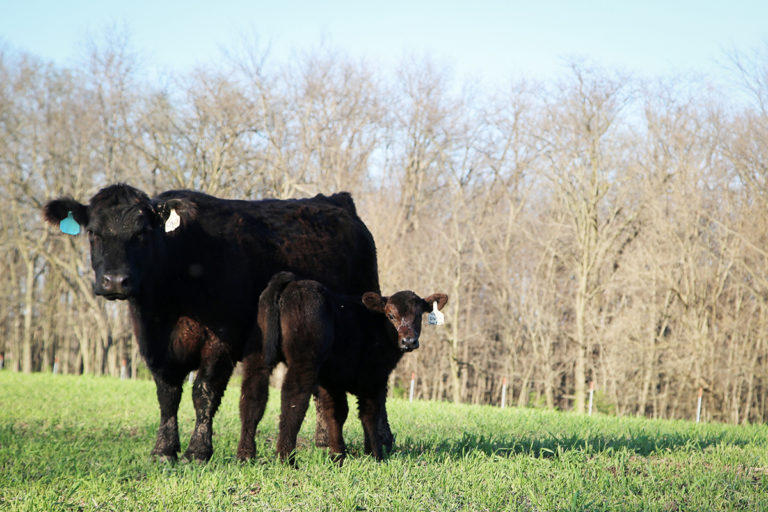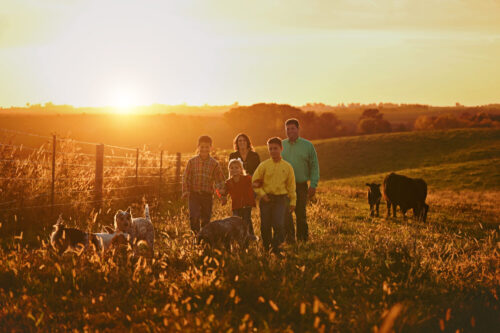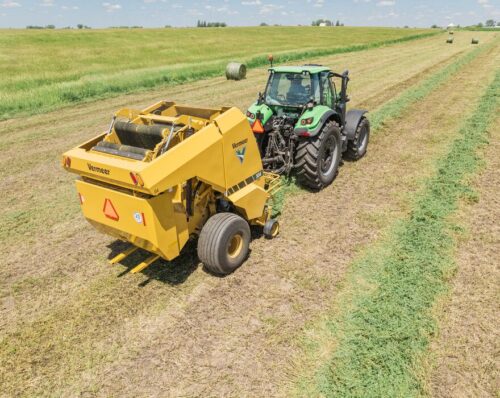
When is the Best Calving Season for You? Consider These Factors.
May 2018
Spring or fall calving? Which do you prefer? The answer to that question is rooted in your management philosophy. If you’re after being the lowest-cost producer, you’re likely a spring calver. But, if you’re out to capture the highest market prices, you may be more inclined to calve in the fall.
That’s just a small part of the equation when examining whether to calve in the spring or fall. In addition to feed and calf market prices, weaning weights, forage availability and overall nutritional needs of both cows and young calves are all factors to consider when determining which timeframe is right for calving in your operation.
“A spring calving system allows producers to wean and market calves prior to winter, which means the producers do not incur winter feeding costs for the calves. This would imply that producers are attempting to balance production costs along with revenues to maximize returns to the cattle operation,” according to University of Tennessee Agricultural and Resource Economist professor and livestock marketing specialist Andrew Griffith. “Alternatively, the fall calving season is utilized because the calving season generally occurs during the warm, dry months of the year, and calf prices are usually at their seasonal high at time of weaning.”
The majority of the U.S. calf crop is born in the first half of the year, the time period USDA uses to indicate spring-calved calves. In both 2016 and 2017, for example, 73 percent of the calf crop was born in the spring versus 27 percent in the fall, according to the July 2017 USDA-NASS U.S. Cattle Inventory report*.
Let’s take a look at how the different factors weigh in on whether fall or spring calving is right for your operation.
1. Nutrition/forage availability. It’s important to have a secure supply of forage that will meet the nutritional needs of lactating cows so they can support growing calves. The type of forage available to you is a major factor in determining whether spring or fall calving is best for your operation.
“It is important to consider seasonal nutritional demands for lactation, maintaining body condition and rebreeding,” Griffith says in a university report**. “The nutritional needs for spring-calving cows closely match warm-season grass production. Similarly, fall-calving cow nutrition is closely aligned with cool-season grasses.”

2. Weaning and calving rates. The latest research on weaning and calving rates is somewhat split between spring and fall calving, for one main reason. Griffith says fescue toxicity – a common cause for lower calving rates among cows grazing tall fescue – is a likely contributor of lower spring calving rates in Arkansas and Texas research. Research from Tennessee and Oklahoma, however, shows both higher calving and weaning rates among spring calvers, making forage supply a key factor when determining which is best for your operation.
“Weaning weights may differ by calving season due to climatic conditions and/or nutrient availability. Fall-calving cows have a higher nutrient demand than spring-calving cows during the winter months when forage supply is low,” Griffith says. “The increased demand for nutrients during the winter months generally results in higher feed costs for the fall-calving herd.”
3. Cattle and feed prices. Whether you want to be the lowest-cost producer, or want to fetch the highest market price for your calves, both markets are important variables to consider when weighing calving seasonality. Forage and feed availability is tied directly to cattle prices when calves are typically sent to the market, making it important to strike the right balance between cattle and feed market prices when identifying the right calving time frame for you.
“The seasonality of cattle and feed prices greatly influences profits. Fall-born calves marketed in the spring often receive higher prices than identical weight, spring-born calves marketed in the fall. The price difference is largely due to supply and demand for calves. Supply is driven by most calves being weaned and marketed in the fall and fewer calves being weaned and marketed in the spring,” Griffith says. “Similarly, demand is largely driven by grass availability. Demand for calves tends to be stronger in the spring when grass begins to grow and lower in the fall when many forage species are entering dormancy. Additionally, yearly feed costs are often higher for fall-calving cows than for spring-calving cows, due to a need for greater nutritional intake while rebreeding and nursing a calf in winter.”

4. Labor. Calving season is one of the most labor-intensive times for every operator, so much so that labor is a big factor when determining whether to calve in the spring or fall. If you’re also a row crop producer, for example, you may have less time to devote to calving in the fall, spring calving a better option. It’s just one example of the importance of considering time as the main labor factor.
“Producers harvesting crops in the fall likely have more labor hours available for a spring calving season, which generally occurs prior to crop planting,” Griffith says. “It is also important for producers with off-farm jobs to consider labor availability during calving seasons as it relates to labor needs of the off-farm job.”
These are just a few of the considerations producers should account for in identifying when is the best time for calving. Just as with any major management decision, every producer should first examine his or her own operation, then apply major factors like these, both in terms of operations and profit potential.
“Cow-calf producers have many reasons other than profitability, such as convenience or labor availability, for choosing one calving season over another,” Griffith says. “Convenience factors and labor availability are not easily discussed over a broad audience nor measured, but profitability of calving seasons can be discussed and measured.”
* USDA-NASS July 1 Cattle Inventory Report, http://usda.mannlib.cornell.edu/usda/nass/Catt//2010s/2017/Catt-07-21-2017.pdf
** Fall Versus Spring Calving: Considerations and Profitability Comparison, https://extension.tennessee.edu/publications/Documents/W419.pdf
This article contains third-party content, observations or advice that is not necessarily endorsed by Vermeer Corporation, its dealers or its affiliates.






